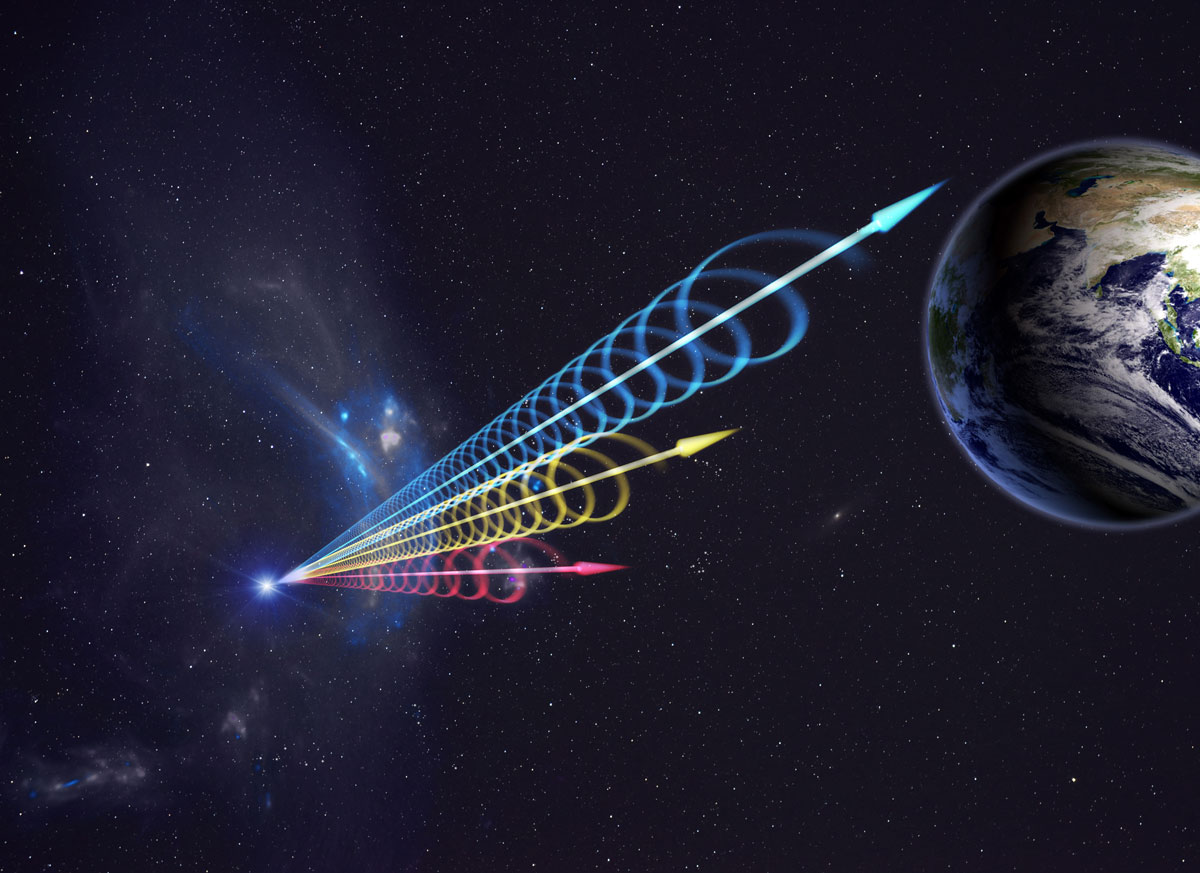
Last year's mysterious outburst of deep-space light flashes was even more frenzied than previously thought, a new study reports.
On Aug. 26, 2017, astronomers with the Breakthrough Listen project — a $100 million effort to hunt for signs of intelligent alien life — spotted 21 repeating light pulses called fast radio bursts (FRBs) emanating from the dwarf galaxy FRB 121102 within the span of 1 hour.
Some scientists think FRBs come from fast-rotating neutron stars, but their source has not been nailed down. And that explains Breakthrough Listen's interest: It's possible that the bursts are produced by intelligent extraterrestrials, perhaps to blast space-sailing craft through the cosmos at incredible speeds, some folks have speculated. (Breakthrough Listen's sister project, Breakthrough Starshot, is developing a laser-based light-sailing system that aims to launch tiny probes toward alien solar systems in the next 30 years.) [13 Ways to Hunt Intelligent Aliens]
And FRB 121102, which lies about 3 billion light-years from Earth, is particularly intriguing: It's the only known "repeater" source of FRBs, which otherwise tend to be one-offs.
In the new study, Breakthrough Listen team members based at the University of California, Berkeley SETI (Search for Extraterrestrial Intelligence) Research Center applied machine-learning techniques to the August 2017 data set, which was acquired by the Green Bank Telescope in West Virginia and was originally analyzed using traditional methods.
The researchers, led by UC Berkeley doctoral student Gerry Zhang, trained an algorithm called a "convolutional neural network" to spot FRBs among the 400 terabytes of data. The strategy is similar to that employed by IT companies to optimize internet search results, Breakthrough Listen representatives said in a statement.
Zhang and his colleagues dug up an additional 72 light flashes, bringing the total number of FRBs detected on that day, from that single source (whatever it may be), to 93.
Sign up for the Live Science daily newsletter now
Get the world’s most fascinating discoveries delivered straight to your inbox.
"Not all discoveries come from new observations," Breakthrough Initiatives Executive Director Pete Worden said in the statement. (Breakthrough Listen is part of the larger Breakthrough Initiatives program, which also runs Breakthrough Starshot, Breakthrough Message and Breakthrough Watch.)
"In this case, it was smart, original thinking applied to an existing dataset," Worden added. "It has advanced our knowledge of one of the most tantalizing mysteries in astronomy."
That mystery remains, of course; we still don't know what FRBs are. But the artificial-intelligence approach employed in the new study could lead to a variety of advances down the road, Zhang said.
"This work is only the beginning of using these powerful methods to find radio transients," he said in the same statement. "We hope our success may inspire other serious endeavors in applying machine learning to radio astronomy."
The new paper has been accepted for publication in The Astrophysical Journal. You can read a copy of it for free at the Breakthrough Listen FRB 121102 site.
Follow Mike Wall on Twitter @michaeldwall and Google+. Follow us @Spacedotcom, Facebook or Google+. Originally published on Space.com.











